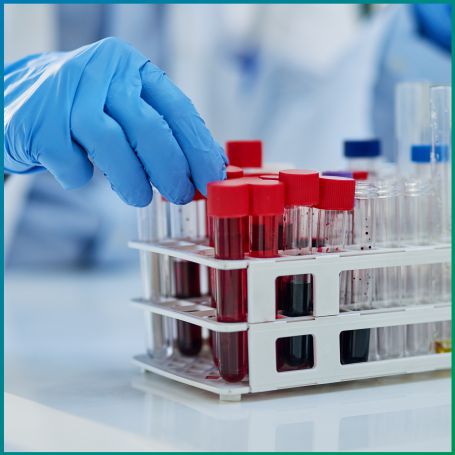
Culture and sensitivity tests play a crucial role in the diagnosis and management of infections caused by various microorganisms.

These tests involve the cultivation of samples from infected sites—such as urine, pus, body fluids, and sputum—to identify the pathogens responsible for the infection and determine their susceptibility to specific antibiotics or antifungal treatments.
1. Urine Culture - Urine cultures are predominantly used to diagnose urinary tract infections (UTIs). The process involves collecting a mid-stream urine sample to minimize contamination.
A] Common Pathogens: The most frequently isolated organism in urine cultures is Escherichia coli, followed by Klebsiella pneumoniae, Proteus mirabilis, and Enterococcus faecalis.
B] Procedure: The sample is inoculated onto selective culture media, incubated, and then examined for bacterial growth. Sensitivity testing is conducted on isolated colonies to determine which antibiotics are effective.
2. Pus Culture - Pus samples are essential for diagnosing infections associated with abscesses or wounds.
A] Common Pathogens: Frequently identified organisms include Staphylococcus aureus (including MRSA), Streptococcus pyogenes, and various anaerobes.
B] Procedure: Aseptic technique is employed to collect pus directly from the infection site, minimizing contamination. The sample is then cultured and examined for growth.
3. Body Fluid Culture - Cultures can also be performed on various body fluids, such as:
A] Cerebrospinal Fluid (CSF): Critical for diagnosing meningitis, pathogens like Neisseria meningitidis and Streptococcus pneumoniae are commonly identified.
B] Synovial Fluid: Used to diagnose septic arthritis, often cultured for organisms like Staphylococcus aureus.
C] Pleural Fluid: Cultures help identify pathogens responsible for pleural effusions, including tuberculosis and pneumonia.
4. Sputum Culture - Sputum cultures are primarily used to diagnose respiratory infections, including pneumonia and tuberculosis.
A] Common Pathogens: Pathogens such as Mycobacterium tuberculosis, Streptococcus pneumoniae, and Haemophilus influenzae are frequently identified.
B] Procedure: Sputum is collected by expectoration or bronchoscopy and cultured to assess for the presence of pathogenic organisms.
Interpreting culture and sensitivity results pune requires understanding the terms used:
1] Susceptible: The organism is likely to be inhibited by the antibiotic at achievable serum concentrations, indicating it can be used for treatment.
2] Intermediate: The organism may be inhibited by the antibiotic but requires higher doses or may not be effective in some patients.
3] Resistant: The organism is not likely to be inhibited by the antibiotic at achievable serum concentrations, suggesting it should not be used for treatment.
At Diagnopein, we offer comprehensive, accurate, and timely diagnostic services, including the Culture & Sensitivity 2 (Urine/Pus/Fluid/Sputum) test pune. With our NABL-accredited labs, cutting-edge technology, and skilled technicians, you can be assured of reliable results every time. Get your results quickly, especially when time is crucial in detecting severe infections.
Competitive pricing without compromising on quality. Our team of experienced professionals ensures the test is conducted smoothly with minimal discomfort. We provide not just the Culture & Sensitivity 2 (Urine/Pus/Fluid/Sputum) test results but insights into your health condition, helping you and your doctor make informed decisions about treatment. For more information call us at +91 9204 108108.
1. Culture Method
2. Sample
3. Colony Count
4. Organism(s) Isolated
5. Culture Report: Culture yields growth of
6. Culture isolated after 7 days :
7. Culture isolated after 14 days:
8. Culture isolated after 21 days:
9. Ampicillin
10. Amikacin
11. AMOXYCLAV
12. cefoperazon+sulbactam
13. Cefuroxime
14. Cefepime
15. Cefotaxime
16. Ciprofloxacin
17. Colistin
18. Ertapenem
19. Fosfomycin
20. Gentamicin
21. Imipenem
22. Levofloxacin
23. Meropenem
24. Norfloxacin
25. Nitrofurantoin
26. Piperacillin-tazobactam
27. Tigecycline
28. Trimethoprim-Sulfamethoxazole (Cotrimoxazole)
29. CEFIXIME
Limitations include potential contamination of samples, the inability to culture certain pathogens (like viruses), the time required for results, and the emergence of antibiotic resistance.
Yes, for urine tests, patients may be advised to avoid certain foods or medications that could interfere with results. For sputum tests, it is often suggested to avoid eating or drinking for a short period before collection.
Common samples for culture and sensitivity testing include urine, pus (from wounds or abscesses), body fluids (such as cerebrospinal fluid or synovial fluid), and sputum (from respiratory infections).